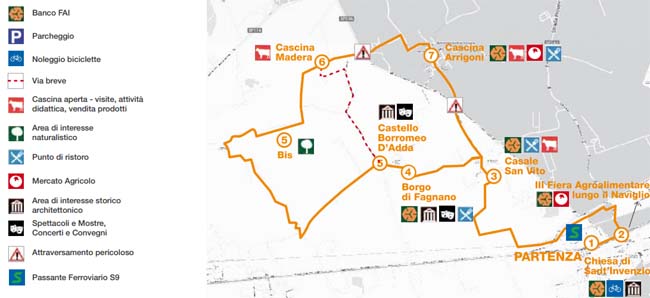 Coming from the center of Cisliano, following the SP (Provincial Route) 114 to Albairate, just out of the village you will find this important Farmhouse situated in a still green and unspoilt area; the rural environment in which it is inserted is emphasized by the present condition of its buildings, which would require a restoration: the oldest part of the Farmhouse is from the sixteenth century but probably the largest gateway in ashlar has all the grandeur of the Baroque.
Coming from the center of Cisliano, following the SP (Provincial Route) 114 to Albairate, just out of the village you will find this important Farmhouse situated in a still green and unspoilt area; the rural environment in which it is inserted is emphasized by the present condition of its buildings, which would require a restoration: the oldest part of the Farmhouse is from the sixteenth century but probably the largest gateway in ashlar has all the grandeur of the Baroque.
In the middle of the Farmhouse, among modern buildings, there is the most important church dedicated to Sts Bernard, Macario and Bordono: it is one of the oldest in the area of Cisliano, dating from the mid-sixteenth siecle. It appeared already in the pastoral visits of S . Charles era and it was officiated by a Chaplain poorly educated and not in line with the precepts of Trent: even the Cardinal Federico Borromeo, who wanted to visit the church, found it closed.
The oldest description we own of the eighteenth-century visits of the Cardinal Pozzobonelli: the church was rectangular with the altar decorated with a painting, it is essentially the same church that we see today, which preserves frescoes dated the sixth century with the Virgin, the Child and Saints Bernardo and Ambrose. The exterior has an interesting structure with blind arches supported by Doric half-pillars (pilasters) and a circular opening above the entrance door with a brick frame. The same type of decoration is in the bell tower: this is not a building of particular value in relation to building quality, but it is interesting because of the desire to rationalize and refine the masonry through regular openings, a Renaissance attempt to measure the space that is still affected by the fifteenth-century decorative taste
A plaque above the door indicates that the church is under the patronage of the Resta family which the coat of arms appears, and it is dated August 19th, 1569, probably the date of erection of the church. The history of the building and its originality, as well as the context in which it stands, still intact, and the presence of frescoes still visible a few decades ago, necessitate an adequate restoration and enhancement of this elegant and ancient rural church.
 English (UK)
English (UK)  Italiano (Italia)
Italiano (Italia) 